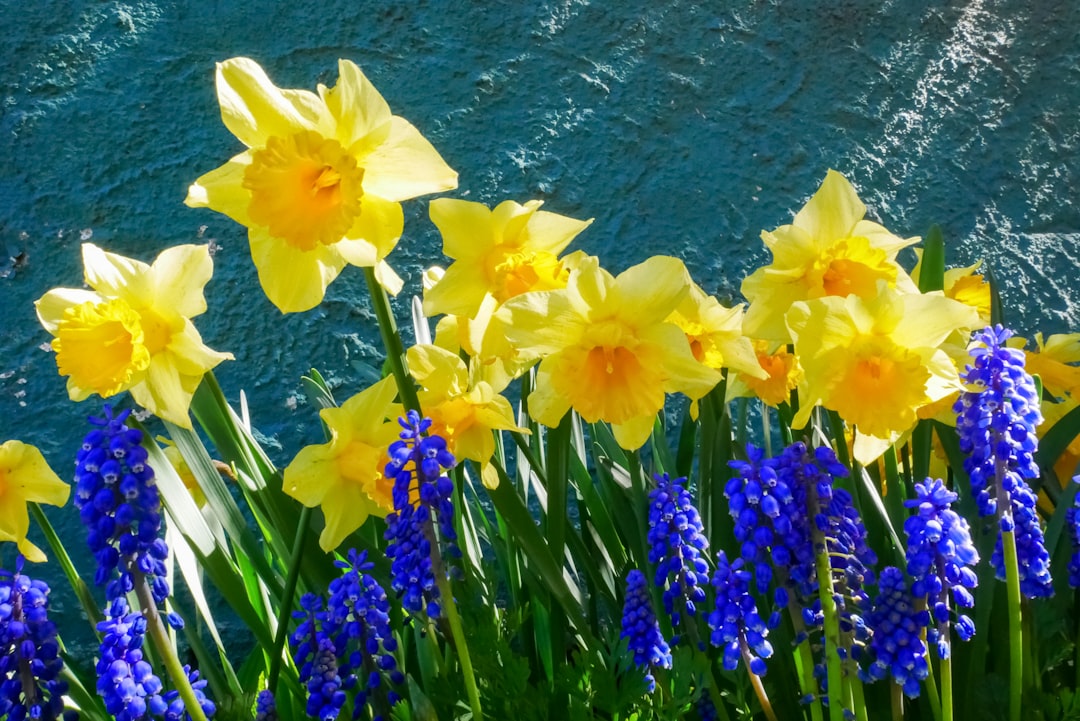Unveiling the Magic of Spring: Virginia Bluebells and Daffodils in Your Garden

Spring is a time of renewal and transformation, a season when the world awakens from its winter slumber and bursts forth with vibrant colors and fragrant scents. For gardeners, it's a time of excitement and anticipation, as they prepare to plant and nurture the flowers that will bring beauty and joy to their outdoor spaces. One of the most enchanting ways to add a touch of woodland charm to your garden is by incorporating Virginia bluebells (Mertensia virginica) into your landscape. These delicate, bell - shaped flowers, with their soft blue - violet hues, are a true symbol of spring and can create a breathtaking display when paired with daffodils.
Virginia bluebells are native to the eastern United States and are commonly found in wooded areas, stream banks, and floodplains. They are a type of perennial wildflower, which means they will come back year after year, adding a reliable source of color to your garden. The plants typically grow to a height of 1 to 2 feet and have lance - shaped leaves that emerge in early spring. As the season progresses, the plants produce clusters of nodding, tubular flowers that start out pink in bud and gradually turn a lovely shade of blue as they open. This color transformation is one of the unique features of Virginia bluebells and adds an extra element of interest to the garden.
When it comes to choosing a location for your Virginia bluebells, they prefer partial to full shade and moist, well - drained soil. They are well - suited for woodland gardens, shady borders, or areas under trees where other plants might struggle to thrive. Before planting, it's a good idea to prepare the soil by adding organic matter such as compost or leaf mold. This will help improve the soil structure and fertility, providing the plants with the nutrients they need to grow and bloom.
One of the great things about Virginia bluebells is that they are relatively low - maintenance. Once established, they require little watering, except during periods of drought. They are also resistant to most pests and diseases, making them a hassle - free addition to your garden. However, it's important to note that Virginia bluebells go dormant in the summer, so it's a good idea to plant them among other perennials that will fill in the space once the bluebells have died back.
Now, let's talk about the perfect companion for Virginia bluebells: daffodils. Daffodils (Narcissus spp.) are another classic spring flower that is known for its bright, cheerful colors and easy - to - grow nature. There are hundreds of different varieties of daffodils available, ranging in color from yellow and white to orange and pink. When paired with Virginia bluebells, the bold colors of the daffodils provide a striking contrast to the soft blues of the bluebells, creating a visually stunning display.
Daffodils are also perennials and are extremely hardy. They prefer full sun to partial shade and well - drained soil. Plant the daffodil bulbs in the fall, about 6 inches deep and 4 to 6 inches apart. They will bloom in early to mid - spring, depending on the variety. Like Virginia bluebells, daffodils are relatively low - maintenance. They require little watering once established and are resistant to most pests and diseases.
To create a beautiful spring garden with Virginia bluebells and daffodils, you can plant them in groups or drifts. For a more natural look, scatter the bulbs and plants randomly throughout the garden bed. You can also create a border or edge using the two flowers, with the daffodils in the front and the Virginia bluebells in the back. This will create a layered effect and add depth to your garden.
In addition to their aesthetic appeal, both Virginia bluebells and daffodils are beneficial for pollinators. Bees, butterflies, and other insects are attracted to the nectar and pollen of these flowers, helping to support the local ecosystem. By planting these flowers in your garden, you are not only creating a beautiful outdoor space but also doing your part to help protect the environment.
As the gardening season kicks off, consider adding Virginia bluebells and daffodils to your garden. Their combination of colors, textures, and easy - care nature makes them a perfect choice for any gardener, whether you're a beginner or an experienced pro. So, head to your local nursery, pick up some bulbs and plants, and get ready to enjoy the beauty of spring in your own backyard.
Remember, gardening is a journey, and each season brings new opportunities to learn and grow. With Virginia bluebells and daffodils, you can create a spring garden that will be the envy of your neighbors and a source of joy and relaxation for you and your family.